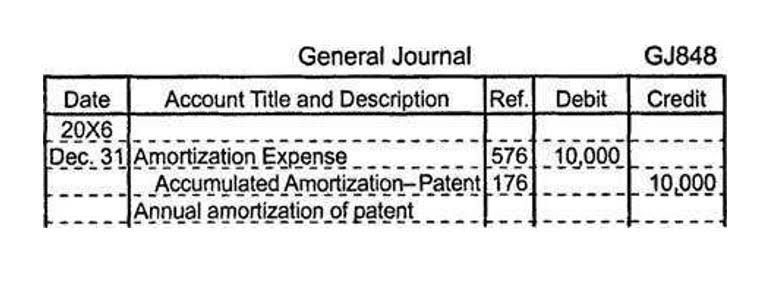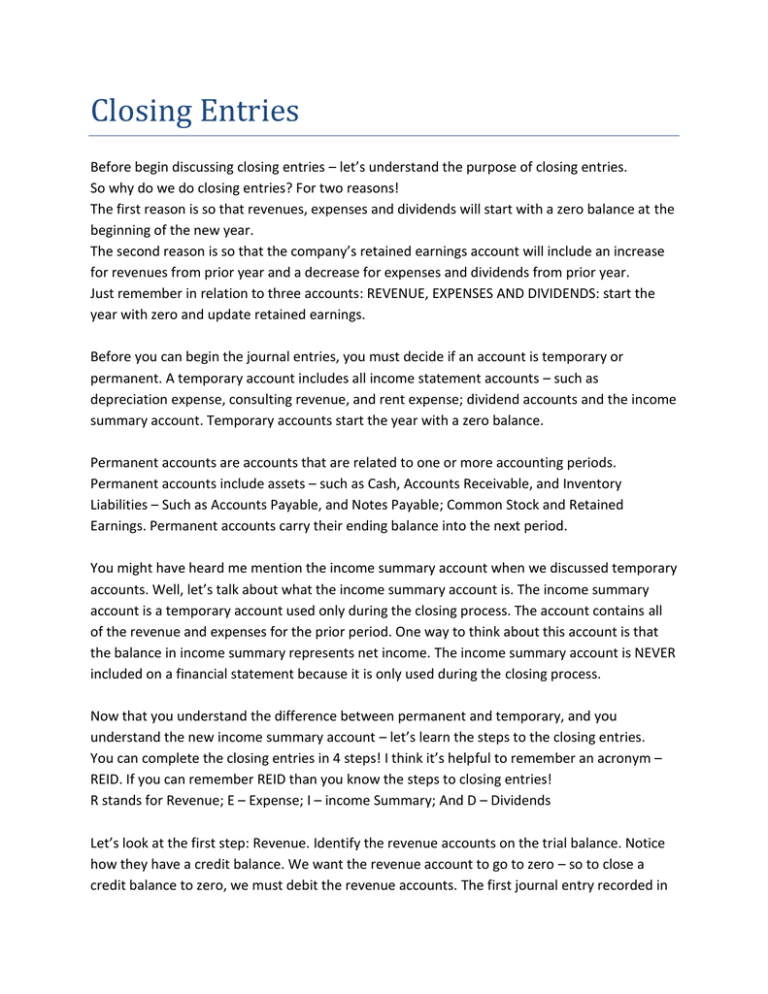Closing Entry: What It Is and How to Record One

Remember that net income is equal to all income minus all expenses. The third entry requires Income Summary to close to the RetainedEarnings account. To get a zero balance in the Income Summaryaccount, there are guidelines to consider.
Step 2: Close Expense accounts
Temporary accounts are used to accumulate income statement activity during a reporting period. The use of closing entries resets the temporary accounts to begin accumulating new transactions in the next period. Otherwise, the balances in these accounts would be incorrectly included in the totals for the following reporting period. A temporary account is an income statement account, dividend account or drawings account. At the end of the accounting period, the balance is transferred to the retained earnings account, and the account is closed with a zero balance.
- In other words, revenue, expense, and withdrawal accounts always have a zero balance at the start of the year because they are always closed at the end of the previous year.
- It is important to note that previous accounting period data should not be carried over into a new period, as it can greatly skew information and negatively impact businesses.
- First, all the various revenue account balances are transferred to the temporary income summary account.
How to Record a Closing Entry
RetainedEarnings is the only account that appears in the closing entriesthat does not close. You should recall from your previous materialthat retained earnings are the earnings retained by the companyover time—not cash flow but earnings. Now that we have types of business bank accounts closed thetemporary accounts, let’s review what the post-closing ledger(T-accounts) looks like for Printing Plus. Remember the income statement is like a moving picture of a business, reporting revenues and expenses for a period of time (usually a year).
Journalizing and Posting Closing Entries
The expense accounts have debit balances so to get rid of their balances we will do the opposite or credit the accounts. Just like in step 1, we will use Income Summary as the offset account but this time we will debit income summary. The total debit to income summary should match total expenses from the income statement.
Step 1: Transfer Revenue
In addition, if the company uses several sets of books for its subsidiaries, the results of each subsidiary must first be transferred to the books of the parent company and all intercompany transactions eliminated. If the subsidiaries also use their own subledgers, then their subledgers must be closed out before the results of the subsidiaries can be transferred to the books of the parent company. The net result of these activities is to move the net profit or net loss for the period into the retained earnings account, which appears in the stockholders’ equity section of the balance sheet. Notice that the balances in interest revenue and service revenueare now zero and are ready to accumulate revenues in the nextperiod. The Income Summary account has a credit balance of $10,240(the revenue sum).

First, all the various revenue account balances are transferred to the temporary income summary account. This is done through a journal entry that debits revenue accounts and credits the income summary. Remember, when using the double-entry system, you must always debit one account and credit another for the same amount. It is also important to note that the income summary account is primarily used in the manual accounting process. If your business uses automatic software to manage your financial needs, it will not use an income summary account to shift these temporary account balances.
After most of the cycle is completed and financial statements are generated, there’s one last step in the process known as closing your books. And so, the amounts in one accounting period should be closed so that they won’t get mixed with those in the next period. For partnerships, each partners’ capital account will be credited based on the agreement of the partnership (for example, 50% to Partner A, 30% to B, and 20% to C).
As mentioned, one way to make closing entries is by directly closing the temporary balances to the equity or retained earnings account. Accounts are considered “temporary” when they only accumulate transactions over one single accounting period. Temporary accounts are closed or zero-ed out so that their balances don’t get mixed up with those of the next year. All of Paul’s revenue or income accounts are debited and credited to the income summary account. This resets the income accounts to zero and prepares them for the next year.
